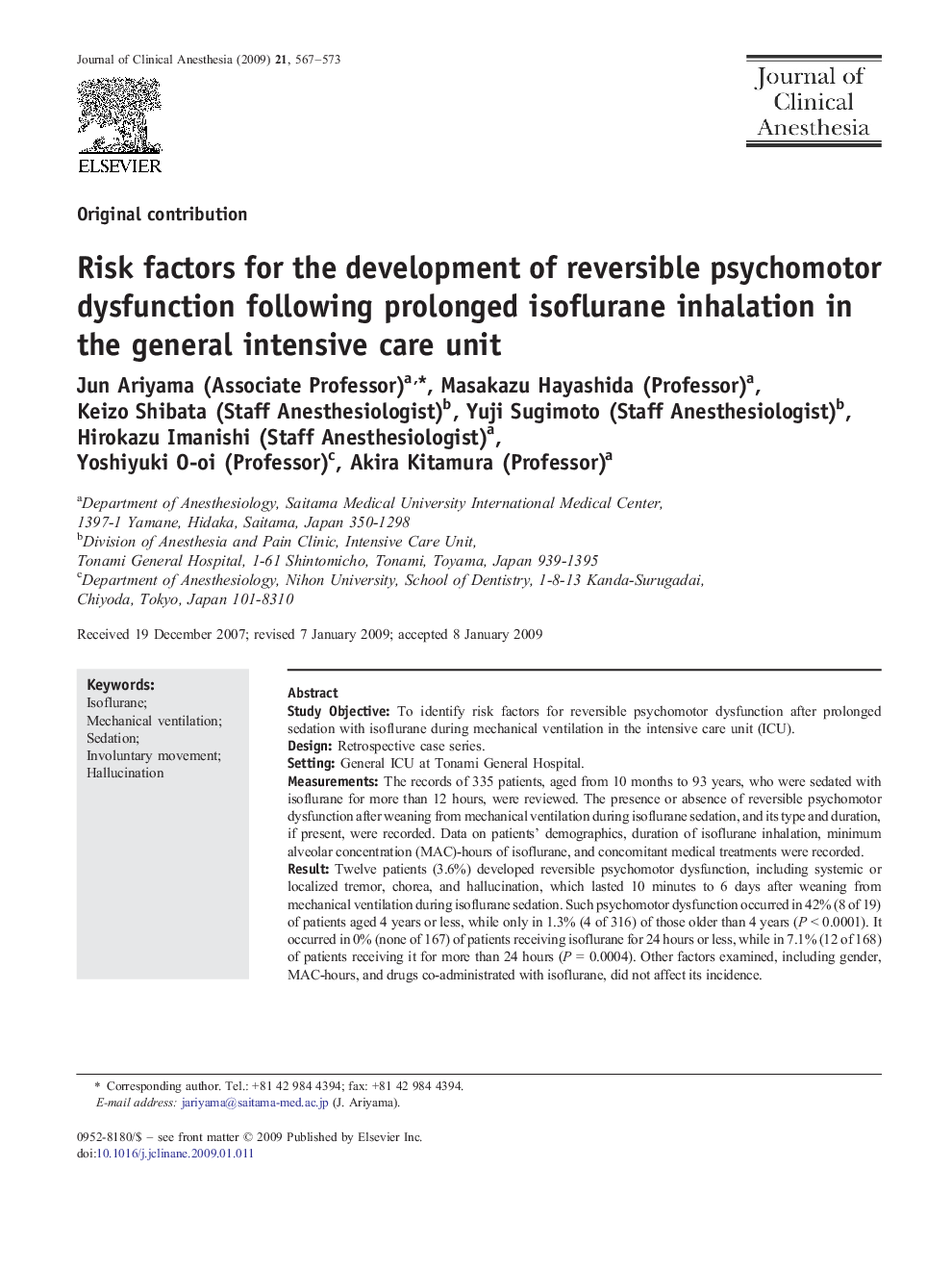| Article ID | Journal | Published Year | Pages | File Type |
|---|---|---|---|---|
| 2763266 | Journal of Clinical Anesthesia | 2009 | 7 Pages |
Study ObjectiveTo identify risk factors for reversible psychomotor dysfunction after prolonged sedation with isoflurane during mechanical ventilation in the intensive care unit (ICU).DesignRetrospective case series.SettingGeneral ICU at Tonami General Hospital.MeasurementsThe records of 335 patients, aged from 10 months to 93 years, who were sedated with isoflurane for more than 12 hours, were reviewed. The presence or absence of reversible psychomotor dysfunction after weaning from mechanical ventilation during isoflurane sedation, and its type and duration, if present, were recorded. Data on patients’ demographics, duration of isoflurane inhalation, minimum alveolar concentration (MAC)-hours of isoflurane, and concomitant medical treatments were recorded.ResultTwelve patients (3.6%) developed reversible psychomotor dysfunction, including systemic or localized tremor, chorea, and hallucination, which lasted 10 minutes to 6 days after weaning from mechanical ventilation during isoflurane sedation. Such psychomotor dysfunction occurred in 42% (8 of 19) of patients aged 4 years or less, while only in 1.3% (4 of 316) of those older than 4 years (P < 0.0001). It occurred in 0% (none of 167) of patients receiving isoflurane for 24 hours or less, while in 7.1% (12 of 168) of patients receiving it for more than 24 hours (P = 0.0004). Other factors examined, including gender, MAC-hours, and drugs co-administrated with isoflurane, did not affect its incidence.ConclusionFour years of age or less and isoflurane inhalation for more than 24 hours were considered to be significant risk factors for the development of reversible psychomotor dysfunction after prolonged sedation with isoflurane.
